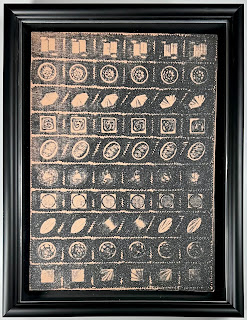Wrapped Snoopy House, Project for Charles M. Schulz Museum, 2005; Lithograph with collage of broadcloth, thread, and masking tape, on Rives BFK paper mounted to board (as issued); Signed Christo and numbered 130/250 in pencil upper right; Landfall Press ink stamp bottom left verso; Copyright 2005 Christo ink stamp bottom right verso; Size - 24 1/2 x 21 1/8", Frame 33 3/4 x 30 1/2"; Framed using a black wood frame, acid free mat, linen liner, and UV plexiglass.
"Any element of impermanence in an artwork creates a feeling of fragility, even vulnerability, as well as a sense of urgency about viewing it. There is at the same time an inherent awareness of the loss we feel at its absence, knowing that tomorrow it will be gone." - Christo
Christo Vladimirov Javacheff (1935-2020) was an artist most associated with the Process Art Movement and noted for his large-scale and site specific environmental installations. He and his wife Jeanne-Claude Denat de Guillebon (1935-2009) were born on the same day in Bulgaria and Monocco, respectively. They met and married in Paris in the late 1950's and began working together under Christo's name; later crediting artwork created by both of them under the joint name of 'Christo and Jeanne-Claude" Their works were usually large, visually impressive, controversial, and often taking years or decades of preparation to execute. The creation process included: developing technical solutions, political and legal negotiation, permitting, environmental approval, private/public hearings, and a lot of persuasion. To raise money for the associated costs, they would refuse grants, scholarships, donations, or public money; and instead financed the works through the sale of their own artwork. The most recognized completed projects includes the Wrapped Reichstag, The Pont Neuf Wrapped, Running Fence in California, and The Gates in New York City's Central Park.
Close up of the Copyright 2005 Christo ink stamp bottom right verso.
In January 1958 Christo first began to wrap objects, starting with a simple paint can. His collection of wrapped household items included shoes, telephones, and other objects and would be jointly known as his Inventory. The wrapping of an object results in the viewer's change in perception, and the increased need for exploration of the object. The viewer has to deal with the transformative effect of the fabric and the the resulting tactile surface. The concealment caused by the wrapping challenges the viewer to reevaluate the object beneath, and the space in which it exists. The point of the wrapping has less to do about concealment, as it does to altering the environment and the challenge to conventional interpretation. The artistic advancement from the Inventory was to graduate to larger and more recognized objects/buildings/landmarks.
The cartoonist Charles M. Schulz, known for his Peanuts comic strip, met Christo and Jeanne-Claude in 1975. Schulz really admired the extraordinary environmental artworks by the pair and paid tribute to them in the 1978 Peanuts comic strip pictured below:
Twenty-five years later, Christo returned the compliment by creating Wrapped Snoopy House,
a life-sized doghouse wrapped in tarpaulin, polyethylene, and ropes;
and presented it to Jean Schulz for permanent display at The Charles M. Schulz Museum.
Close up of the Landfall Press ink stamp bottom left verso.
Framed "Wrapped Snoopy House," 2005 by Christo
Christo also designed and completed a work for The Charles M. Schulz Museum and Research Center. A limited edition, signed and numbered lithograph with collage of broadcloth, thread, and masking tape entitled Wrapped Snoopy House-Project for the Charles M. Schulz Museum. The piece was sold in order to help fund the Museum and Research Center, and it sold out very quickly. The limited edition with collage wrapped doghouse is an absolutely fantastic
work by the
great Process artist Christo, and would be a wonderful addition to any art
collection!




















